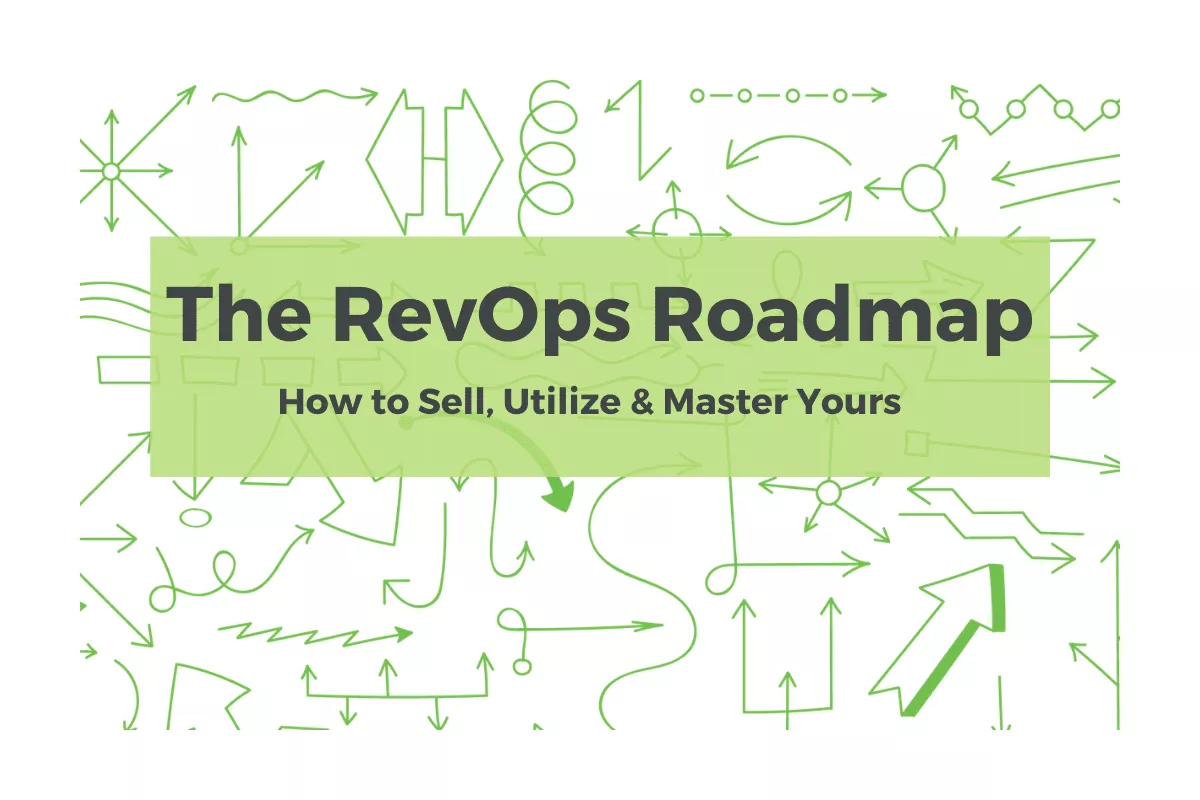The RevOps Roadmap: How to Sell, Utilize, and Master Yours

The purpose of a RevOps roadmap
Let’s start with what a RevOps roadmap is not.
- It is not a list of projects you want to complete.
- It’s not a document you create and never update again.
- It’s not a set-in-stone plan.
- It’s not a threat to your agility and finally
- It’s not really optional if you want your RevOps team to be effective.
You probably wouldn’t trust a product manager without a roadmap, so why is it any different for your go-to-market operations? Most B2B companies decide what work they should be doing based on either the intuition of their internal teams or a senior stakeholder’s experience. This approach leads to time (read: money) being spent on initiatives without a revenue-based “why” behind them.
That’s the reason roadmapping is such a core part of our RevOps fundamentals program; too many teams are focused on things that have no significant impact on revenue. The purpose of RevOps is to maximize the value of every “yes” you get from a buyer, and the way you do that is by consistently working to improve the buying experience. By earning the trust of your customers and showing them that their experience matters to you even after they’ve handed over their credit card info, you’ll win bigger deals and keep your customers longer.
Selling Your RevOps Roadmap to Stakeholders
One of the biggest enemies of new tools and processes is a lack of buy-in. As operators, we can’t just earn one stakeholder’s trust and call it a day; we have to present a plan that will not only work but that is also extremely shareable and can stand up on its own even when it’s taken out of the room.
A visual asset that’s approachable and, well, pretty. That’s what every roadmap has to ultimately become: something your team can get excited about—a statement of intent all about how you plan to improve their experience over the next twelve months.
Roadmap Utility
When you can get your team excited about your roadmap, you won’t need to fight as hard to make it a part of your regular operational cadence. Our team will tell you that the number one way to ensure your roadmap fails is to forget about it. In order to be valuable, a roadmap needs to be a living document that’s revisited and updated often (at least every 2 weeks). On top of that, it needs to be leveraged consistently if you want it to do its job.
When utilized properly, your RevOps roadmap should be a multi-purpose tool that helps break down silos by serving as a single source of truth and creates certainty across your revenue team. Nothing goes on the roadmap that doesn’t have a “why” to justify it.
Gap Analysis for RevOps Roadmapping
One trait of a best-in-class revenue operator is a proclivity for asking “why?”. In order to answer that question, you have to start with a gap analysis. When it comes time to create your roadmap, you should be prioritizing work based on the level of impact made by the gap that catalyzed it.
When presenting a roadmap to stakeholders, you need to be able to explain it and tell the stories that live inside it effectively. The gap analysis is the way you learn those stories.
Where in the buyer journey is something broken, what impact is it having on the buying experience, and how is that showing up in your pipeline? You should aim to go into every strategy conversation with the answers to these questions.
Roadmapping Skill Maturity
When it comes to roadmapping, there are four core skills that must be developed in order to reach maturity:

For a team just beginning this journey, we recommend focusing on Idea Generation and Utility first, as these are the skills that will help your team start to speak a shared language and get used to leveraging your roadmap consistently.
Of course, it’s important to evaluate your strengths and weaknesses as a team in order to understand which skills you should be focusing on developing.
Best-in-Class RevOps Roadmapping
So, what does the peak of roadmapping maturity look like?
- A list of customer-based gaps to inform idea generation
- A shareable visual asset to serve as a source of truth
- Alignment on priorities each month
- A commitment to keep the roadmap accurate